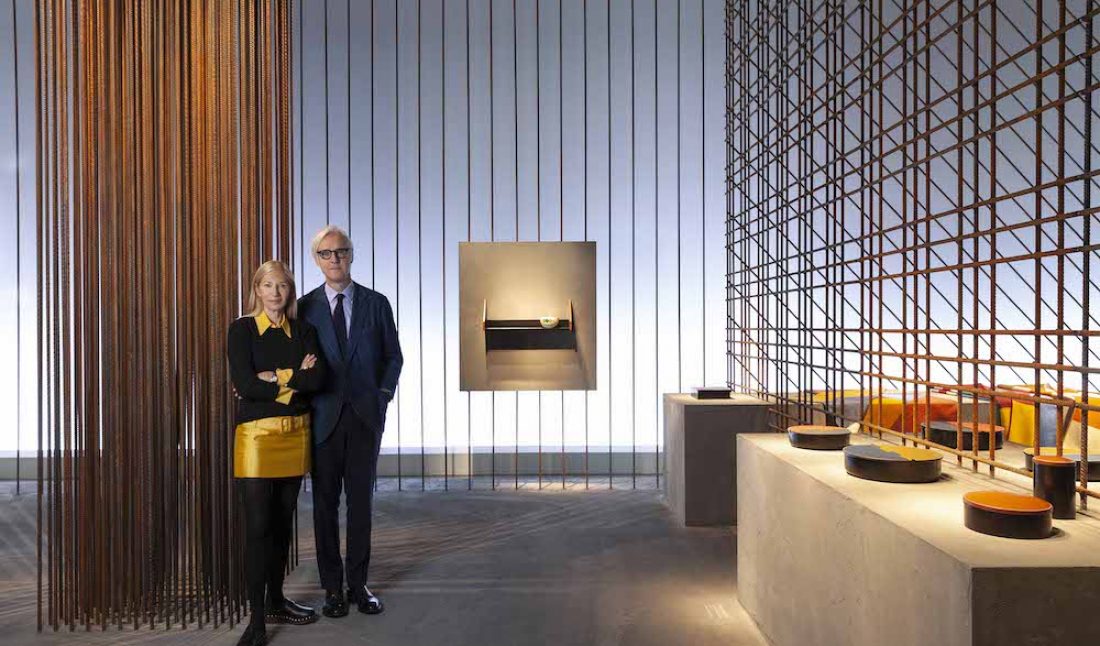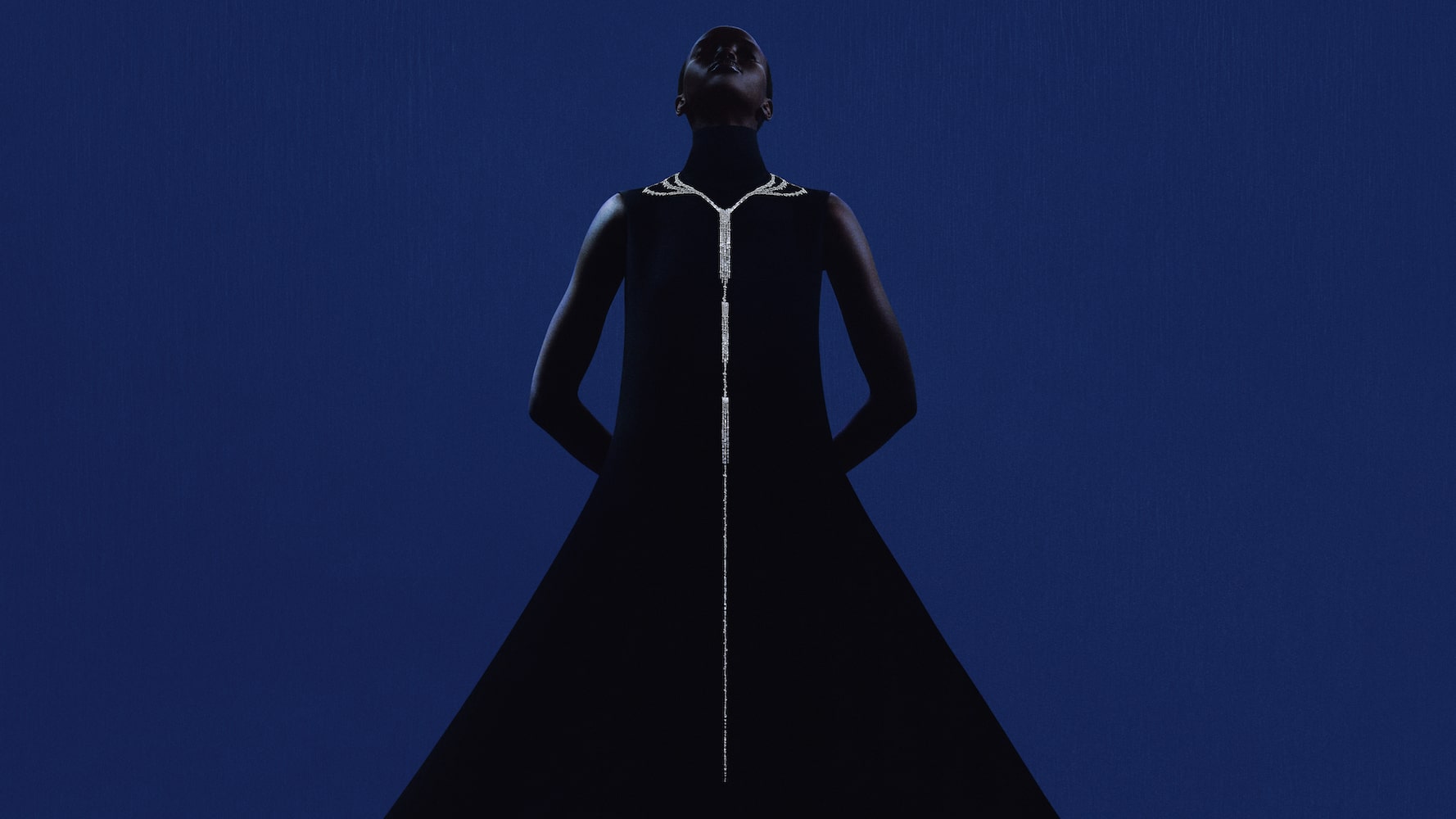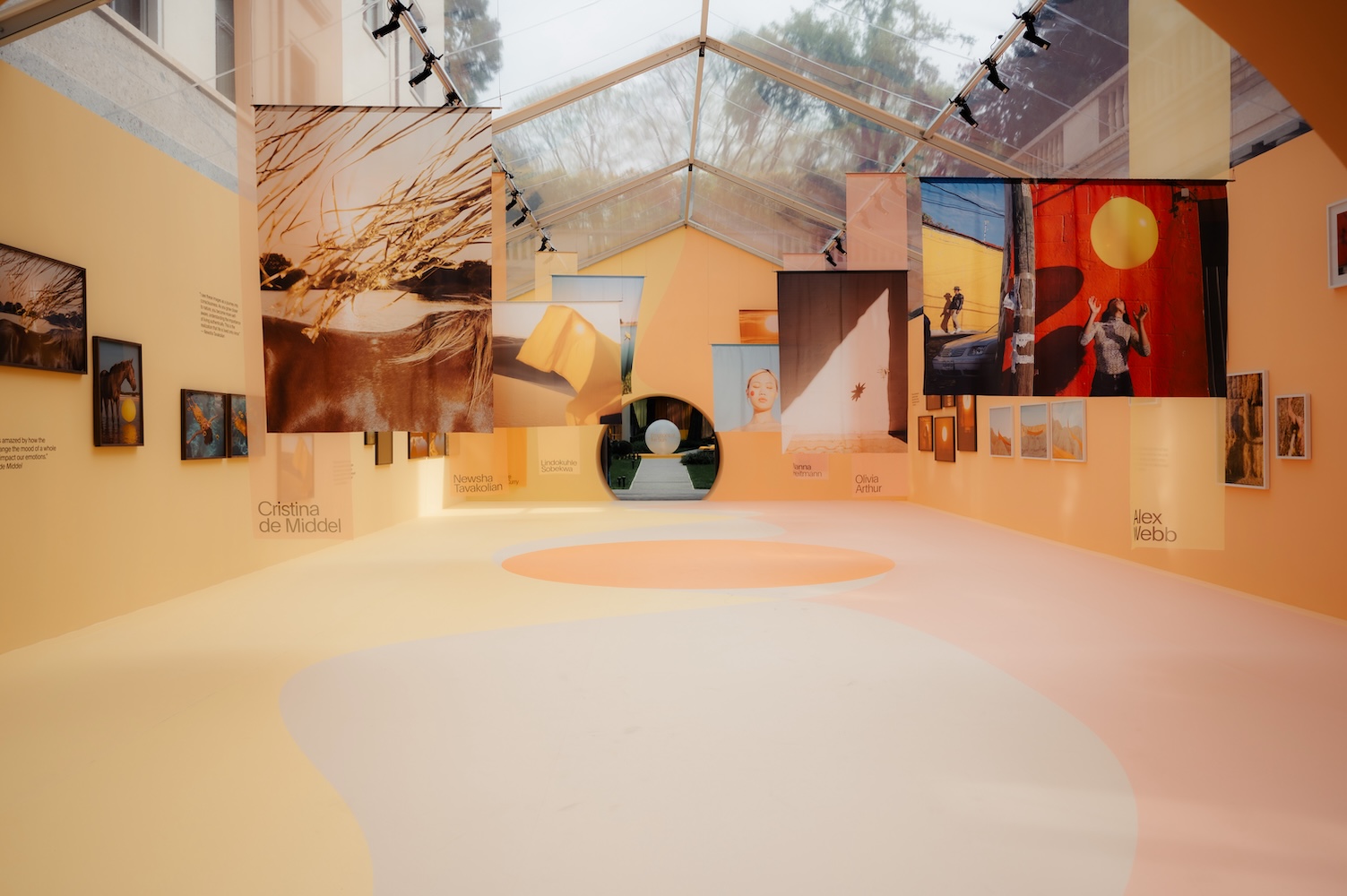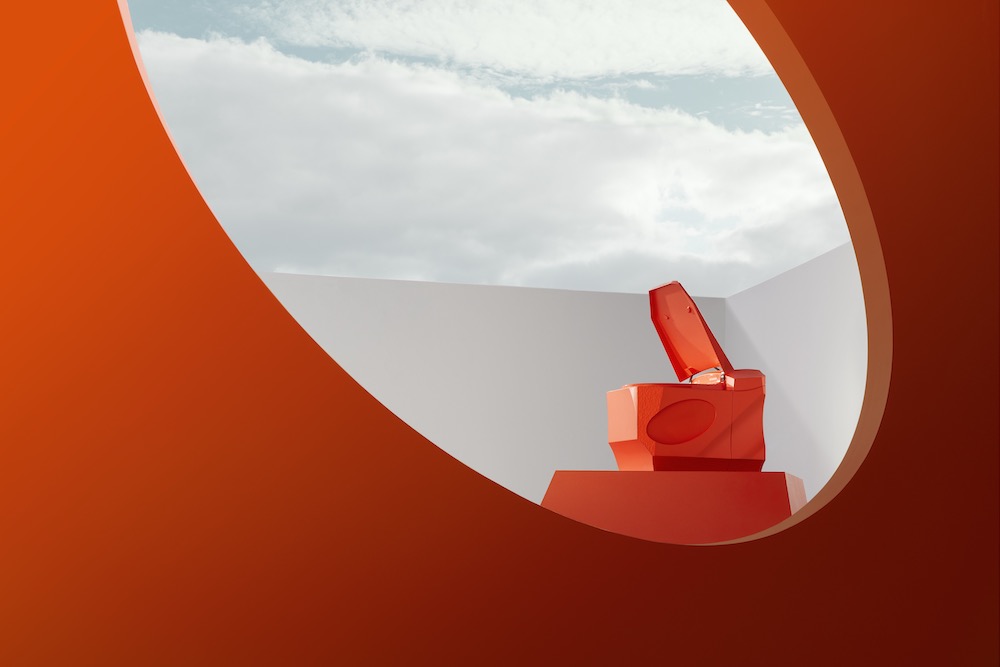Hermès Home presented its latest collections in Milan.
During Milan Design Week in April, Hermès Home showcased its newest collections at La Pelota. The maison looked to the fundamentals of form and minimalism in all aspects of its presentation, which was enclosed in a cage-like geometric structure, powerfully showcasing designs that employed organic materials and a paired-down visual language. There were rugs, chairs, sofas, lamps, tableware, and objects—all imagined with the recognizable Hermès rich palette, clean lines, geometric motifs, and the occasional equestrian reference.
The installation this year also allowed visitors to experience an often overlooked aspect in today’s society: time. While everything on view was focused on the new and now—glass lamps alongside iron bowls—it also allowed for a deeper understanding of the reality of the time-intensive creative process, from inception to perfection. At Hermès, it can take up to five years to perfect a single object, created by artisans that have trained in a particular craft their entire career.
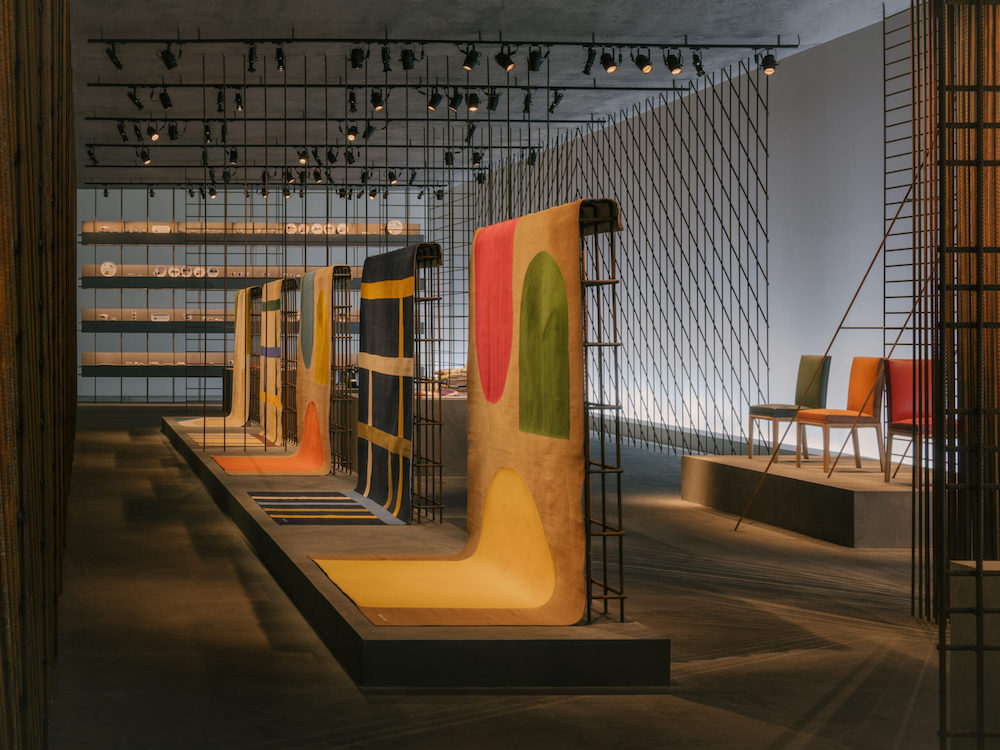 Installation view of Hermès’s installation during Milan Design Week 2023, photo by ©Maxime-Verret, courtesy of Hermès.
Installation view of Hermès’s installation during Milan Design Week 2023, photo by ©Maxime-Verret, courtesy of Hermès.
The setting was a shrine to harmony and an ode to minimalism without any distraction from the objects. Standout pieces included the Soufflé d’Hermès lamps by Harri Koskinen, which presented as colorful domes made from natural glass; the Ancelle d’Hermès armchair by Cecilie Manz, which bears a solid, light wood structural frame and a lightweight leather seat; and the Saut Hermès trio of porcelain pieces.
In Milan, Whitewall had the chance to speak with Hermès Maison’s co-creative directors, Charlotte Macaux Perelman and Alexis Fabry.
WHITEWALL: Can you tell us about your vision for this year’s installation?
CHARLOTTE MACAUX PERELMAN: This year, we took into consideration the objects and their globality as a general set. We wanted to focus on harmony. There is a continuation among our textiles, objects, and pieces of furniture. Sometimes we isolate those objects, conceptually speaking. Due to the structure of the installation, which is very open this year, we wanted to show how they interact with one another.
A Focus on Harmony for Hermès Home
ALEXIS FABRY: Indeed, we focused on the essentials this year. We withdrew all the rest and just kept the supporting structure of the building. We started with this very idea of the ground, on which we have to put our creations. Here, the idea was having a devoid container filled with art and objects.
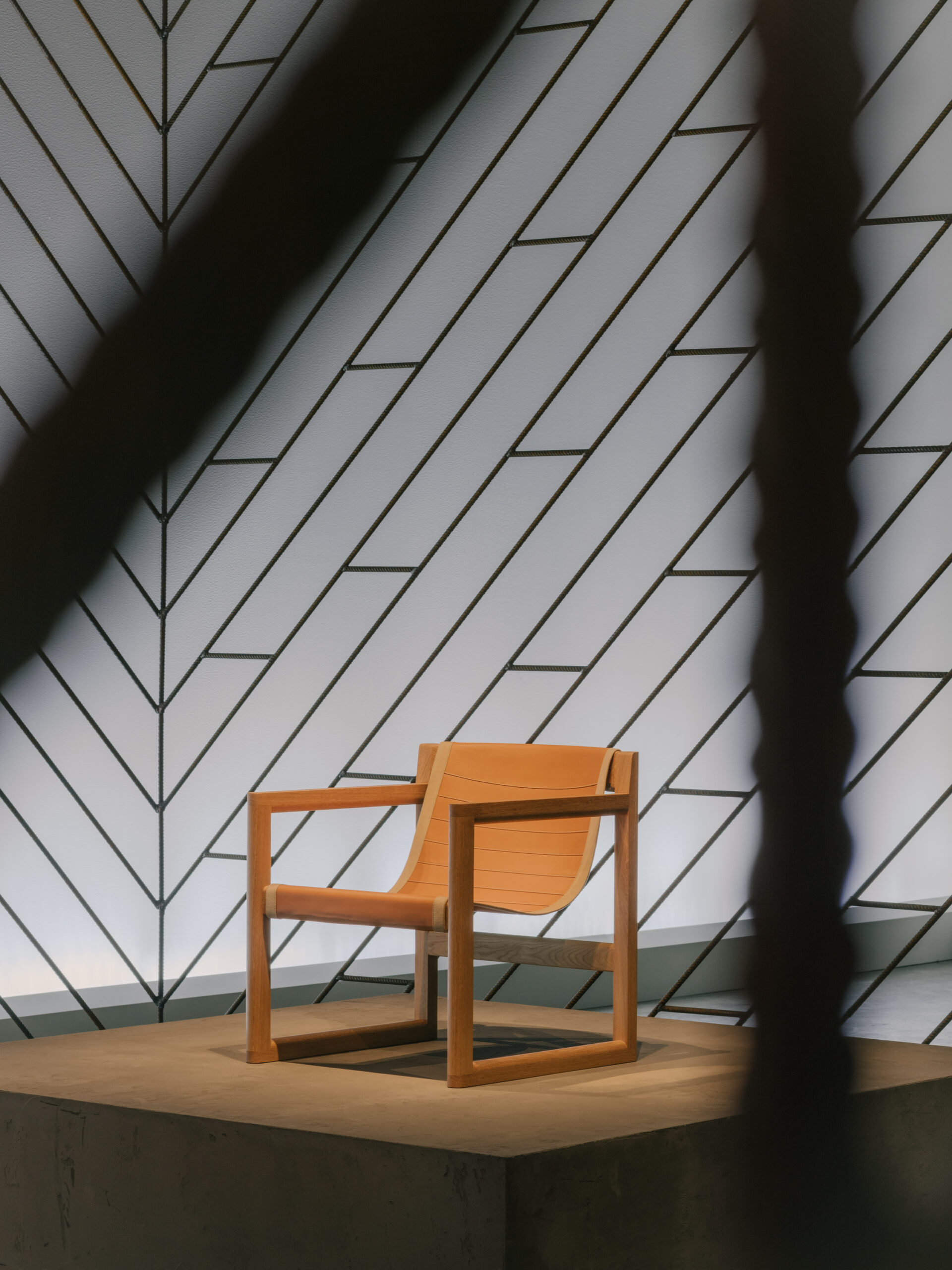 Installation view of Hermès’s installation during Milan Design Week 2023, photo by ©Maxime-Verret, courtesy of Hermès.
Installation view of Hermès’s installation during Milan Design Week 2023, photo by ©Maxime-Verret, courtesy of Hermès.
WW: Did you work with anything new to create this installation?
CMP: Yes, this is indeed part of our job—taking into consideration that the materials are dictating the final outcome. We tend to think that it’s very difficult to work with metal, but metal is actually very soft. The fact that metal is so soft forced me to use some tricks, so to speak, because I had to focus on how to keep the structure in parallel or certain angles, et cetera. It was a kind of engineering effort.
Which is a little bit like what we do with our objects. Sometimes, it’s the material of the item that dictates the final result that you are going to achieve. Take, for instance, our glass lamp. It’s a very strong material and it’s a material that dictates, sometimes, the craft.
WW: Can you tell us about some of the pieces on display, particularly the carpets?
CMP: You can see the back of the carpets because they’re on display. Usually, you never see what’s behind a carpet. These carpets are completely embroidered by hand. This particular craft, this particular skill, can very seldom be seen by the naked eye. This was our preoccupation—to be able to have something that lasts, be sturdy at the same time, and be well done. We really care a lot about integrity, and I like these carpets because they show, on the one hand, modernity— the fact that they’re contemporary—but they’re also being very simple. And them being simple and modern doesn’t hide their complexity in making them. The number of hours of work required and the fact that embroidery is a very, very tough job is something you very seldom see with the naked eye.
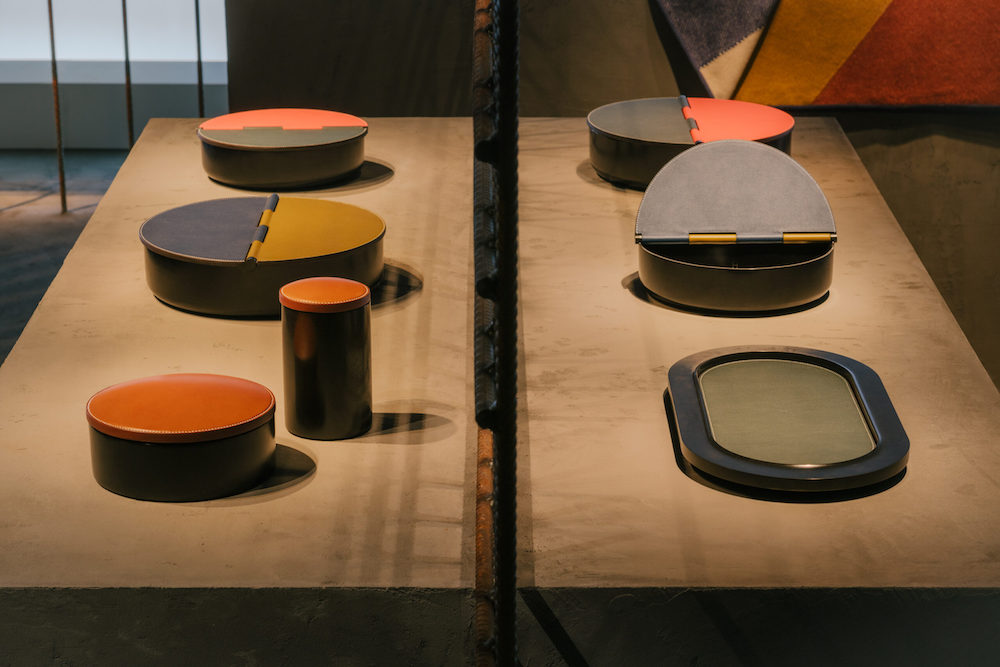 Installation view of Hermès’s installation during Milan Design Week 2023, photo by ©Maxime-Verret, courtesy of Hermès.
Installation view of Hermès’s installation during Milan Design Week 2023, photo by ©Maxime-Verret, courtesy of Hermès.
WW: And what materials were you drawn to for this collection?
AF: This year, we decided to work with two materials, bronze and glass, because there’s the idea of archaic; both materials needing to be worked with fire. We had worked with bronze, but glass is completely new for us. We wanted, especially with bronze, to achieve this materiality, and that’s why we turned to a great Japanese master who specialized just in finishing. We can work bronze in France with extraordinarily good results, but what we wanted was a sort of coarse surface—which was not possible in France. To get this materiality and coarseness, we had to turn to a Japanese master, who used a number of vegetables— beetroots, et cetera—to be able to attain this effect.
The other material being used is leather. There’s a mix between leather and bronze. Leather is a material that is hot, it’s more colored, it’s soft. We really loved this contrast with the coarseness. It took us four years to produce those boxes because, little by little, with time, we realized a number of things that we could apply to the product.
Achieving simplicity in simple shapes is very difficult sometimes. It’s much more difficult than producing a more complex object. When you want to produce an object which is simple, an easy shape, you have to work on the constraints, the limitations that the material poses to you and the limitations that you want the material to achieve. Therefore, to achieve elementary shapes is sometimes much harder.
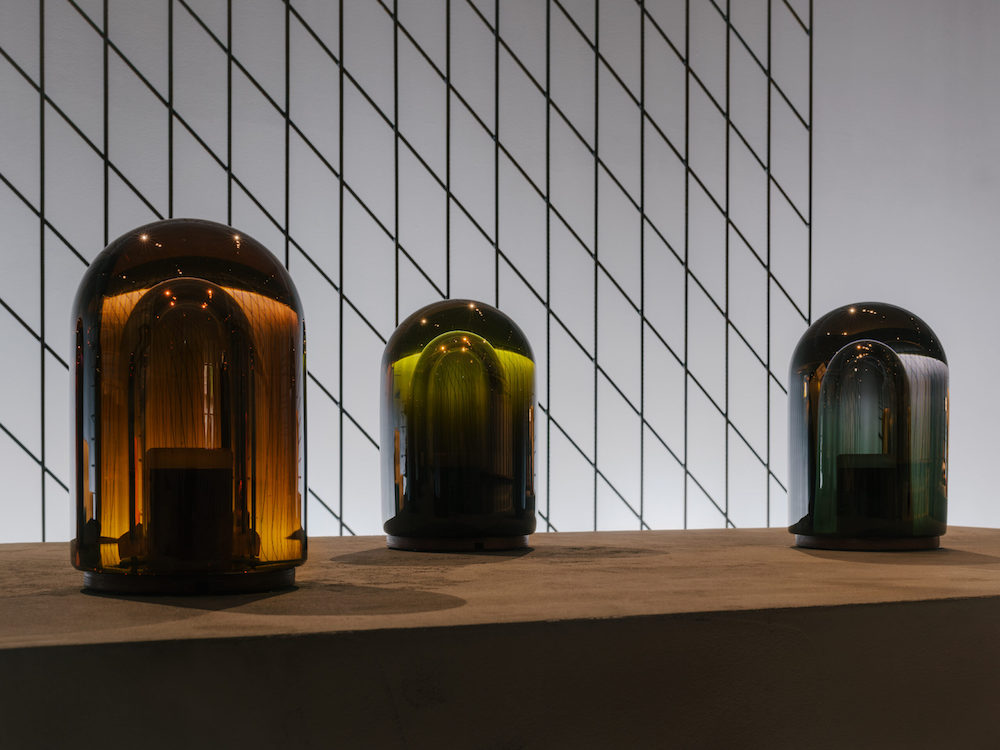 Installation view of Hermès’s installation during Milan Design Week 2023, photo by ©Maxime-Verret, courtesy of Hermès.
Installation view of Hermès’s installation during Milan Design Week 2023, photo by ©Maxime-Verret, courtesy of Hermès.
WW: Was there a similar approach to the glass objects?
CMP: The glass was a brand-new material for us, and therefore it was particularly important for us to work with the craftsman. Our work is always a team effort.
In the case of this particular material, as you can see, the shape is very simple. Exactly because of that, we had to let the craftsman be free. This is very important for us. When you work with a new material and a very simple shape, you generate a lot of uncertainty. That’s why this object came back and forth a number of times between us and the craftsman.
AF: Glass is a material that really exacerbates the color effect. Therefore, it was absolutely necessary for us to find a craftsman who would become a partner. We’ve been working with him and will continue to do so in the future. Thanks to his expertise and skills, we can make our material more brilliant and more important.
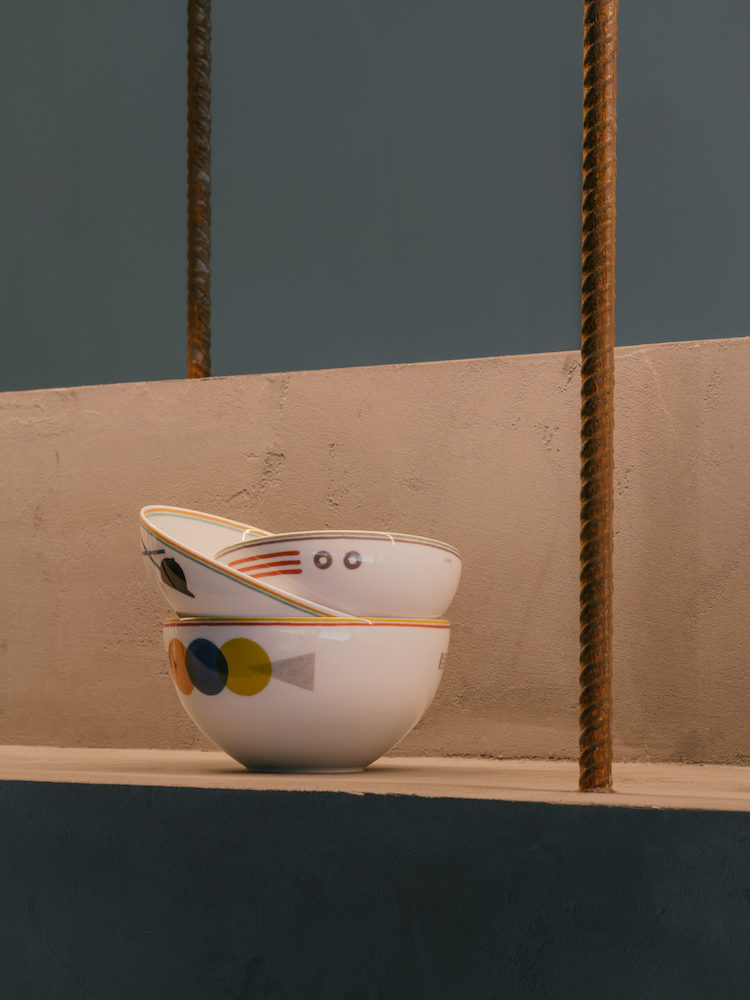 Installation view of Hermès’s installation during Milan Design Week 2023, photo by ©Maxime-Verret, courtesy of Hermès.
Installation view of Hermès’s installation during Milan Design Week 2023, photo by ©Maxime-Verret, courtesy of Hermès.






